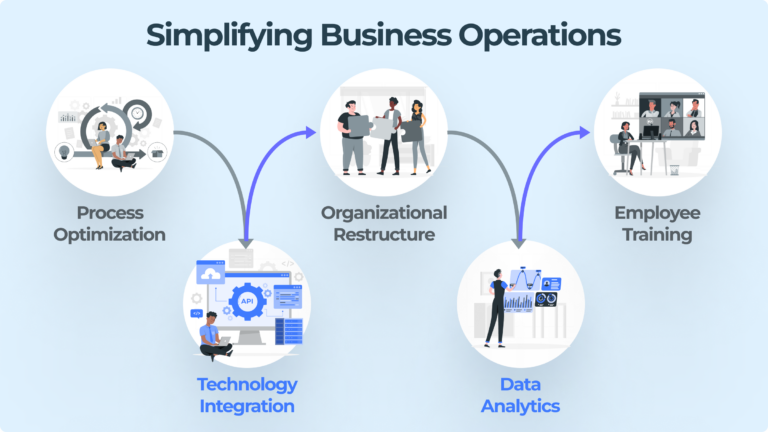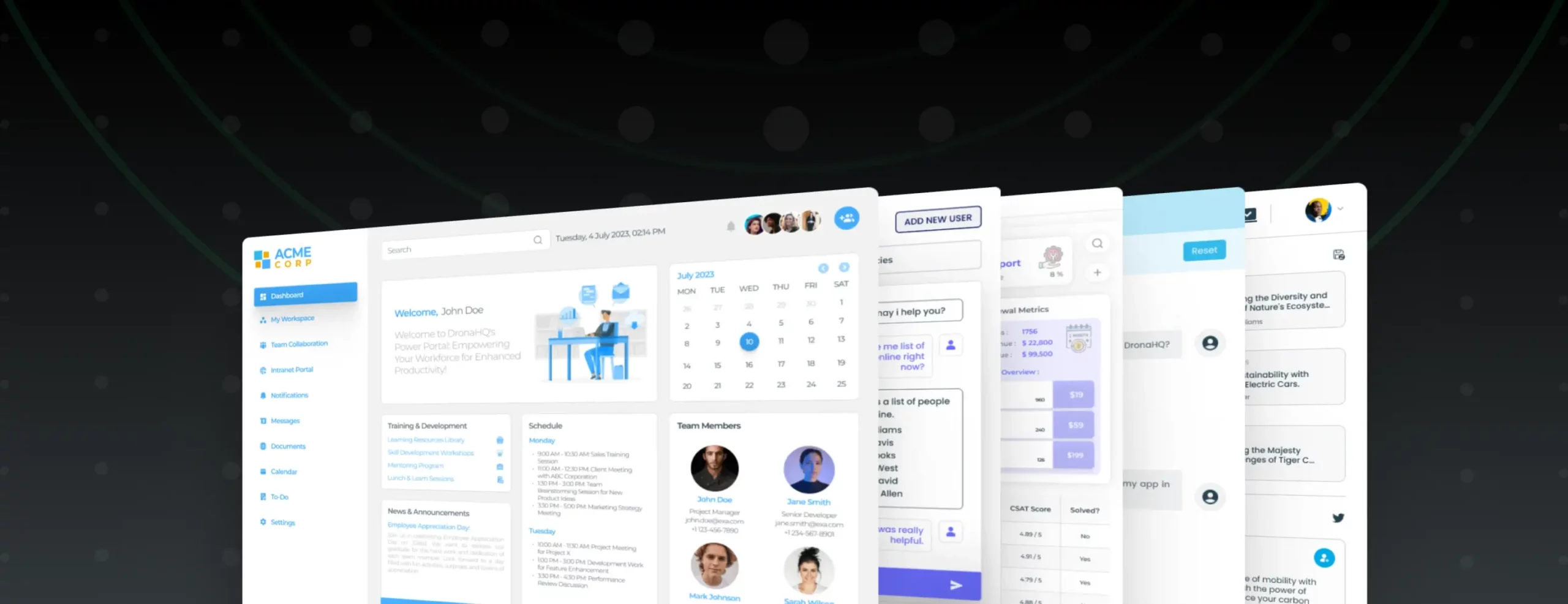

How to simplify business operations? – Simple Tips and Tricks
Internal employees of business organizations often deal with multiple interruptions. These interruptions can be due to professional or personal reasons, but they surely slow down employee productivity. Business users are often left overwhelmed with too many tasks and decisions to make. Hence to ensure a stress-free work environment, businesses should put efforts into simplifying business processes.
A great way to simplify business operations is through leveraging the right technology and streamlining business operations and processes for the employees.
But the question is, how?
We have prepared an in-depth guide to explain why simplifying business operations is the need of the hour and how businesses can succeed in it.
Why Should You Simplify Your Business Operations?
Simplified business operations are the key to building a reliable brand image. Here is why businesses are simplifying their internal processes:
- Simplified business processes play a huge role in achieving cost advantage. While putting efforts into simplifying complex business activities, you can automatically reduce risks and improve cyber security. As a result, you save a lot more than you spend.
- Simplifying business processes also means that you are empowering the business teams and employees. When organizational processes are less complicated, employees can try new ideas and strategies. Hence, the scope of innovation is higher.
- Simplified business processes can shift your business to auto-pilot mode. There are lesser backlogs. This can result in accelerated decision-making and higher accuracy.
5 Easy Ways to Simplify Business Processes
Here are a few simple ways to simplify business processes:
Focus on task automation
Are your employees spending a lot of time on repetitive tasks? Well, you must take action to stop it. Repetitive tasks are a waste of time and come with numerous scopes of error. In fact, most repetitive tasks can be easily automated to save time and effort.
For instance, reporting takes a lot of time. Employees need to evaluate and consolidate data and update it within spreadsheets to present in team meetings. That is time-consuming as well stressful. However, reporting plays a key role in internal communication, and businesses can never skip it.
With automation, you can easily save all those valuable hours spent updating spreadsheets. Built-in dashboards and analytics tools can instantly automate business reports and provide visual insights to simplify the decision-making process. Hence, with automation, employees can spend time on a more valuable task to derive insights from these reports.
Store and consolidate all business data
When a business is in the initial stage, the number of accumulated data is very less. Hence, new businesses can store essential datasets in spreadsheets easily. However, as your operations start growing, spreadsheets are no longer enough to compile all the large volume of accumulated data. Using spreadsheets to store such huge datasets can result in an endless search for essential data.
Clearly, entrepreneurs don’t want a majority of their workforce to spend hour after hour searching for the correct datasets. To resolve this challenge, businesses must focus on storing and consolidating all data in one place. Enterprises can easily use cloud-hosted applications to store all datasets in one place, analyze as per requirements, and access this data storage from anywhere and everywhere.
Build a transparent communication network
Poor communication networks create a lot of ambiguities within an organization. The result is a delay in critical decision-making. It is not only frustrating but costs businesses a lot of money. Even smaller companies with lesser employees lose an average of $420000 each year due to miscommunication.
Some of the common instances of miscommunication are the absence of common collaboration tools, sending incorrect emails, sharing insufficient information, and the list goes on. A great way to address this issue is by creating a common communication platform.
Let’s take the example of Slack. Slack is an instant messaging platform where organizations can create different channels for different business departments and ensure that all employees stay informed about the updates.
Similar internal communication tools can help all employees working in a team to stay on the same page and ensure that no information is lost due to miscommunication.
Continuously optimize internal processes
A big step towards simplifying business processes is optimizing internal tools regularly. Optimizing and improving internal business processes can improve overall efficiency. This is a great practice to identify system gaps from time to time and take action accordingly. In fact, there are several other benefits of optimizing internal processes:
- Enhanced and open communication among all team members
- Efficient data flow management to fulfil both internal and external requirements
- Simplified compliance through standardized practices
- Lesser dependencies due to automation
- Reduced manual activities and lesser errors
How to Achieve Growth-driven Simplification of Business Processes?
Here are a few growth-driven techniques to achieve simplified business processes:
Automate routine processes
Every business should build a process to deliver products and services. The type of deliverables might change based on different factors, but the process should remain the same. However, organizations often make the mistake of not automating the delivery process. This results in several backlogs and delays the entire process.
To simplify business processes, it is a must that businesses spend some time carefully documenting the delivery process end-to-end. Afterward, it can be automated to avoid backlogs, and the entire process continues seamlessly. Businesses can also use project management tools like Asana, ClickUp, JIRA, etc., to automate each step of their workflow.
Streamline business processes with a focus on customers
Businesses should aim at building customer-centric processes. Think from the end-users’ perspective and start streamlining the business process accordingly. Suppose an organization is planning to track its sales performance.
So the probable stages of their workflow would be collecting sales data, evaluating these datasets, and finally deriving significant insights on sales. Hence, your business process should be focused on these stages like “data collection”, “evaluation”, “deriving insights,” and so on. These stages will be of optimum importance in the workflow.
Keep your growth goals in place
Setting the right growth goals plays a key role in simplifying business processes. Your goals decide which workflow will be right for you. Businesses should involve team members to set practical and sustainable goals. This will help build trust and ensure that your growth goals are achieved.
Some other ways to simplify business processes may include collecting employees’ feedback regularly and taking actions based on feedback. Initially, simplifying business processes can become a challenge, especially for small businesses. They don’t have pre-built templates, and a lot of trial and error goes in. However, once a tried and tested template is in place, there is no going behind.
Simplify your Business Operations with DronaHQ
Designed with a build-publish-iterate philosophy, DronaHQ’s visual app builder lets you quickly create tools and apps to optimise business operations without choking your IT team’s bandwidth. It is easy to design your own frontends-forms, dashboards, GUIs, approval systems, task managers- and roll them out to the business users in days.
Well-designed business processes set up your teams on the path to success.
DronaHQ keeps it simple while letting you design sophisticated business processes.
Pick a process that has been hard for you to automate and try it out today on DronaHQ. Get free access >




